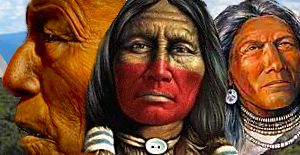| Canada First Nation Reserves | |||||||
 |
 |
 |
 |
 |
 |
 |
 |
|
|
|||||||
| native american indian tribes of the US | |||||||
| |
||||||
Canadian Reserves
|
Artifact Replicas|Jewelry|Clothing|Figurines|On Sale|New ProductsBritish Columbia reserves still in dispute todayWhen British Columbia joined Confederation in 1871 it was the only province where native people constituted the majority. This demographic was to change drastically in subsequent years so that by 1911 they represented one-eighteenth of the total population. In part this population shift was the result of dramatic immigration from all over the world, but during this period there was also a significant decline in First Nations population, particularly among the coastal groups. Another extremely important series of events during this time was the determination of which lands would be set aside for First Nations. These lands, known as Indian Reserves, were established by government officials to provide land for use by First Nations, while leaving the majority of the land for settlers to claim. In 1876 a Joint Commission on Indian Land was established by the federal and Provincial governments to allocate land to each band. For the next fourteen years the Commission travelled throughout the province meeting with First Nations groups to establish reserve lands. In many cases the land allotted to the First Nations was simply the only remaining land in the area that had not been claimed by settlers. The resulting Reserves were often very small and consisted of land with limited resource value. By 1913, after years of petitioning by various First Nations groups notably the Nisga'a and the Fraser River peoples, a Royal Commission, commonly known as the McKenna/McBride Commission, was formed to re-examine Reserves in British Columbia. However, the end result was to confirm the existing Reserves with some modifications, even reductions of allotted land in some instances. From the perspective of both the federal and provincial governments the land issue was essentially settled. However, from the perspective of the First Nations the land question remained a major unresolved problem. Since treaties were not signed in most parts of British Columbia, many people believe that First Nations' right to the land has not been extinguished. The problem did not go away and by the 1960s the issue of B.C. treaties and native land claims resurfaced in the Canadian courts and has continued unabated to this day. Currently some land issues are under consideration in various courts while others are part of the newly established treaty negotiation process with the provincial and federal governments. A Supreme Court judgment in December 1997 called into question past decisions and negotiations, giving more legal weight to oral tradition and affirming aboriginal title to the land. This judgment is likely to have a profound effect on the land issue in British Columbia. In addition to issues relating to land, First Nations have also faced challenges in becoming fully recognized citizens. Not until 1949 were First Nations permitted to vote in British Columbia's elections. Beginning in the 1960s the residential schools were closed down and aboriginal students were integrated into the regular school system alongside other Canadian children. In many places in British Columbia, First Nations groups are asserting control over their own people, establishing self-government, and undertaking responsibility for education and social services that had previously been provided by the federal government. ...Read More about First Nation Reserves FIRST NATIONS RESERVES IN CANADAIndian reserves located throughout Canada #401 to 450 (P to S)
|
 Site Designed by: Mazaska Web Design © 1999-2017 AAANativeArts.com Website Ranking file: canadian reserves |